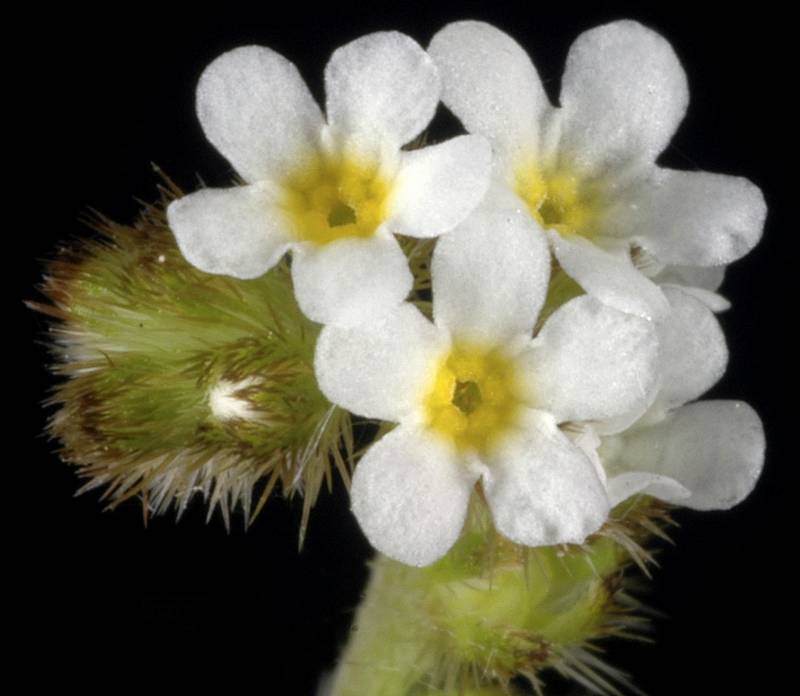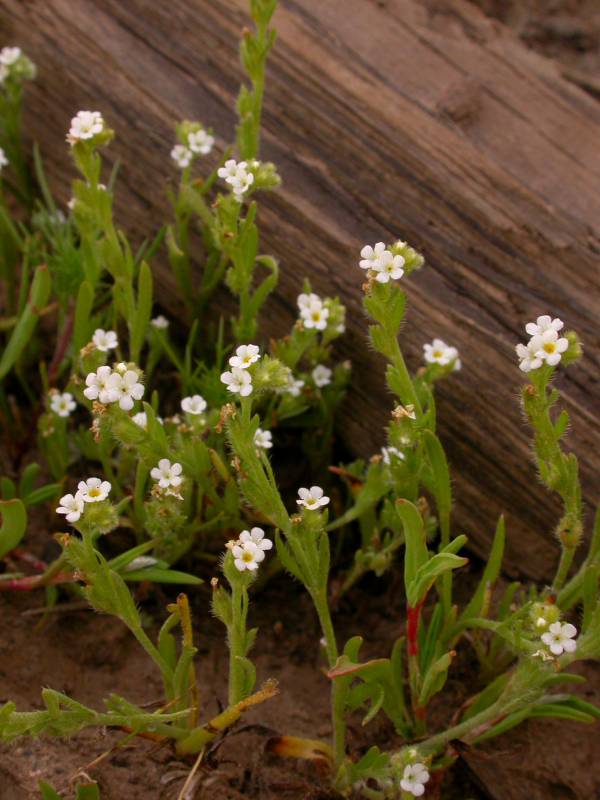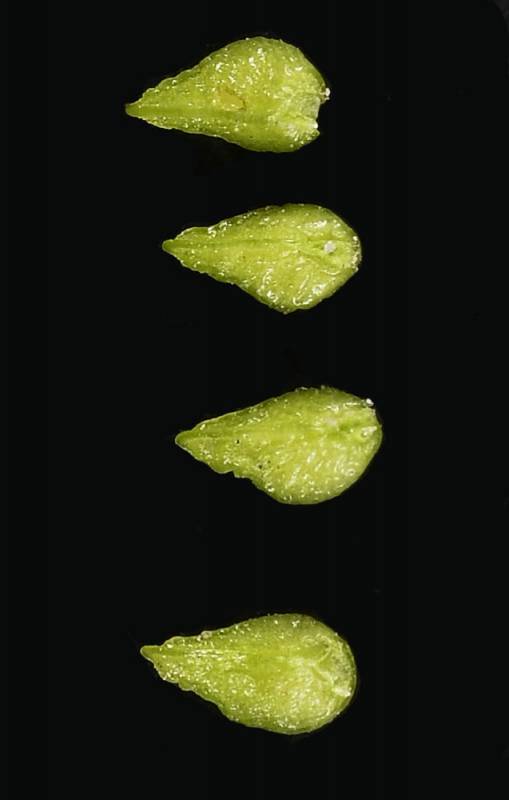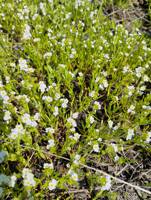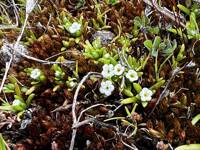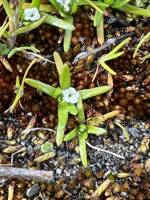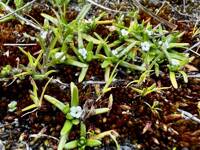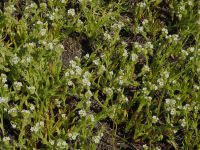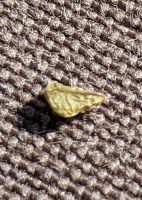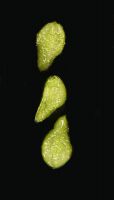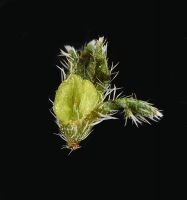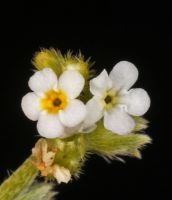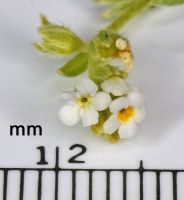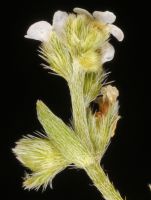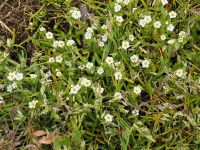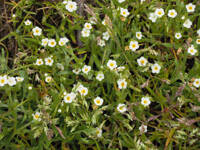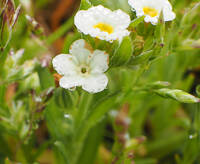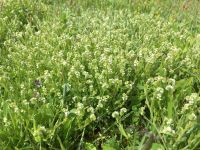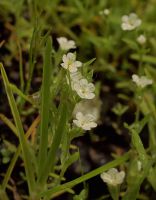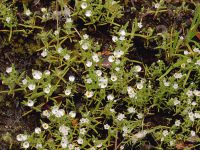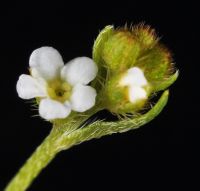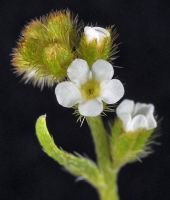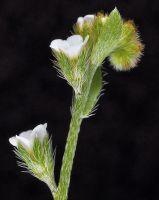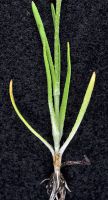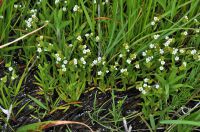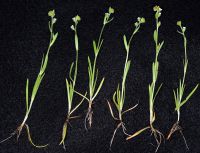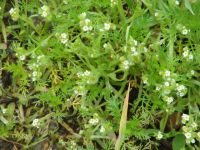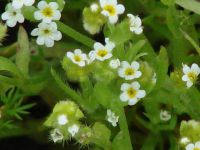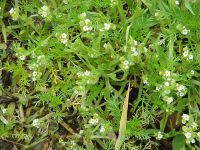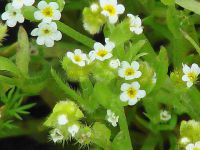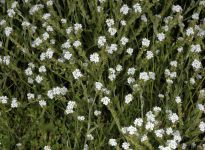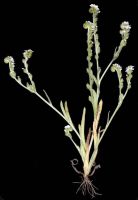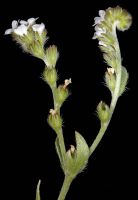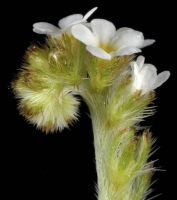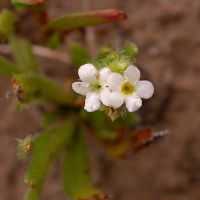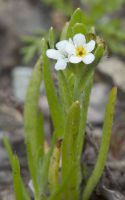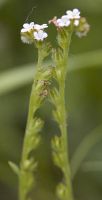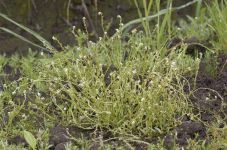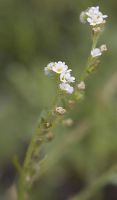Distribution: Occurring on both sides of the Cascades crest in Washington; Alaska to California, east to Wisconsin and New Mexico.
Habitat: Moist areas, foothills to mid-elevations in the mountains, seldom in alkaline areas.
Flowers: May-August
Origin: Native
Growth Duration: Annual
Conservation Status: Not of concern
Pollination: Bees, flies
Appressed-hairy annual from a taproot, or fibrous-rooted, the several stems prostrate to ascending, up to 20 cm. long.
Leaves all cauline, linear, up to 6.5 cm. long and 5 mm. wide, the lower 1-4 pairs opposite, the others alternate.
Flowers in loose spikes terminating the branches, often leafy-bracteate below to near the base; calyx 2-4 mm. long with 5 lanceolate lobes; corolla tube narrow, the 5 lobes abruptly spreading, the limb 1-4 wide, white; hairy appendages opposite the corolla lobes at the top of the tube; nutlets mostly attached to the style in a small area near the base.
Nutlets ovate, 1–1.5 mm, granular to tuberculate, with abaxial transverse ridges, attachment scar basal, ovate.
Publication: Contr. Gray Herb. 68: 75. 1923.
Allocarya scouleri (Hook. & Arn.) Greene
Plagiobothrys granulatus (Piper) I.M. Johnst.
Plagiobothrys scouleri (Hook. & Arn.) I.M. Johnst. var. scouleri [HC]
PNW Herbaria: Specimen records of Plagiobothrys scouleri in the Consortium of Pacific Northwest Herbaria database
WA Flora Checklist: Plagiobothrys scouleri checklist entry
OregonFlora: Plagiobothrys scouleri information
E-Flora BC: Plagiobothrys scouleri atlas page
CalPhotos: Plagiobothrys scouleri photos

